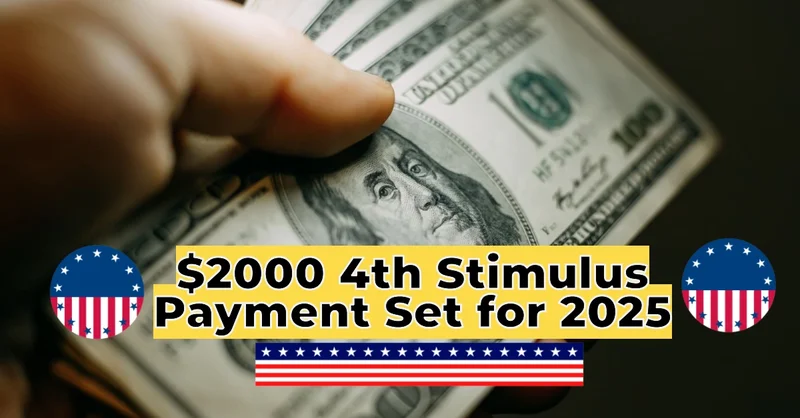Article Directory
The internet is a fascinating data set. In recent weeks, my feeds have registered a significant uptick in chatter—a quantifiable surge in keywords and phrases all pointing to one central query: the `stimulus check for 2025`. Posts citing specific, oddly precise figures like $1,702 or $400 are propagating across social media platforms, creating a powerful narrative of impending financial relief from the `IRS`.
This digital groundswell is a clear reflection of a tangible economic reality. With holiday spending on the horizon and persistent inflation chipping away at household budgets, the demand for a cash injection is palpable. People aren't just hoping for a `new stimulus check 2025`; they are looking for answers to questions like, Are stimulus checks being sent out? Latest news on claims of 2025 payments. But when you analyze the flow of information, you see a classic signal-to-noise problem. The noise is the cacophony of social media rumors. The signal, emanating from Washington D.C., is something else entirely. And it’s not what people want to hear.
The objective truth is this: there is no federal stimulus payment scheduled for 2025. The chatter is untethered from legislative reality. The promises are phantoms, born from a combination of misunderstanding, deliberate misinformation, and the recycling of long-dead political proposals. To understand why your bank account won't be seeing a surprise deposit from the Treasury, we need to dissect the life cycle of these failed ideas.
The Anatomy of a Dead Proposal
Political proposals, especially those involving direct payments to citizens, generate significant media attention. They are potent instruments for gaining public favor. But a press release or a post on X is not a law. The journey from idea to approved funding is a gauntlet of committees, debates, and votes, and it’s a process where most proposals quietly perish.
Take the concept of a `tariff stimulus check 2025`. The idea was to repurpose revenue from former President Trump's tariffs into a rebate for taxpayers. Sen. Josh Hawley even drafted a bill, the "American Worker Rebate Act," which proposed a minimum of $600 per person—or more precisely, $600 per adult and dependent child. The bill was introduced and, as is standard procedure, referred to a Senate committee in August. And then, nothing. The legislative tracker shows no further action. No hearings, no votes, no movement.
We see the exact same pattern with Rep. Ro Khanna’s call for a `$2,000 stimulus check 2025` for families earning under $100,000. He pitched it as a necessary offset for costs driven up by tariffs. He announced his intention to propose a bill. And this is where the data trail goes cold, which I find particularly telling. There is no bill number to track, no co-sponsors to list, and no committee assignment to analyze. It was a talking point, not a piece of active legislation. The same goes for the much-discussed "DOGE dividend," a concept floated early in the year that vanished without ever being formally introduced in Congress.

This is the critical discrepancy. The public sees a headline about a `$2,000 stimulus check` and assumes a process is underway. The reality is that these proposals have failed to clear the very first hurdle (a committee vote) in a long and arduous race. Without congressional approval and the President's signature, the IRS has no authority to issue payments. It’s that simple.
State-Level Outliers and Federal Gridlock
Now, let's address the source of some of the confusion. It's true that some Americans are receiving checks, but the source is their state capital, not Washington D.C. Several states, including New York, Pennsylvania, and Georgia, have been issuing their own one-time "inflation relief" or "rebate" checks. The `NY stimulus check 2025`, for example, provides a modest payment of $200 to individuals and $400 to joint filers below a certain income threshold, funded directly from state tax revenue.
These state-level programs are statistical outliers. They are specific, targeted, and funded by state-level budget surpluses, not a broad federal mandate. It's a fundamental error to conflate a property tax rebate in Colorado with a nationwide `government stimulus check 2025`. They are entirely different fiscal instruments operating on different scales with different objectives.
I've looked at hundreds of fiscal policy announcements, and the language used by state governments is intentionally precise—they call them "rebates" or "refunds." The term "stimulus," however, implies a massive federal intervention designed to jolt the entire national economy. The federal government, currently focused on contentious funding legislation and wrestling with its own debt, has shown zero institutional appetite for another round of broad-based stimulus. The political will simply isn't there, and the legislative calendar is already packed. Anyone waiting for a federal check is watching the wrong game.
Hope Is Not a Fiscal Policy
Let's be perfectly clear. The probability of a federal stimulus check arriving in 2025 is functionally zero. The online rumors are a data set of public anxiety, not a leading indicator of government action. The proposals from various politicians were, in analytical terms, marketing. They were designed to generate headlines and signal concern for constituents, but they lacked the political capital and bipartisan support necessary for survival.
The only data that matters in this equation is the official record from Congress.gov. And that record is silent. There are no active, viable bills on the floor. There is no chatter from the Treasury or the IRS about logistical preparations. The signal is the absence of a signal. While state-level rebates offer minor, localized relief, the idea of a broad federal payment is a ghost—a phantom built from wishful thinking and political rhetoric. In the world of fiscal policy, hope doesn't authorize a direct deposit.
